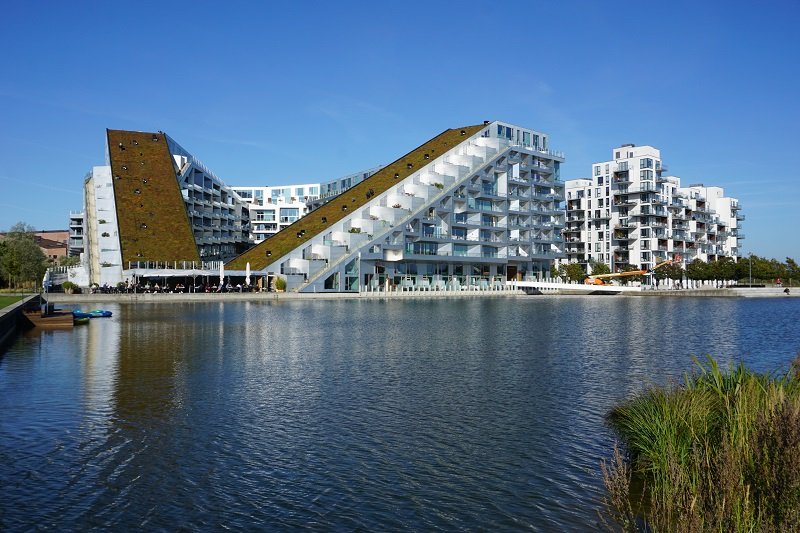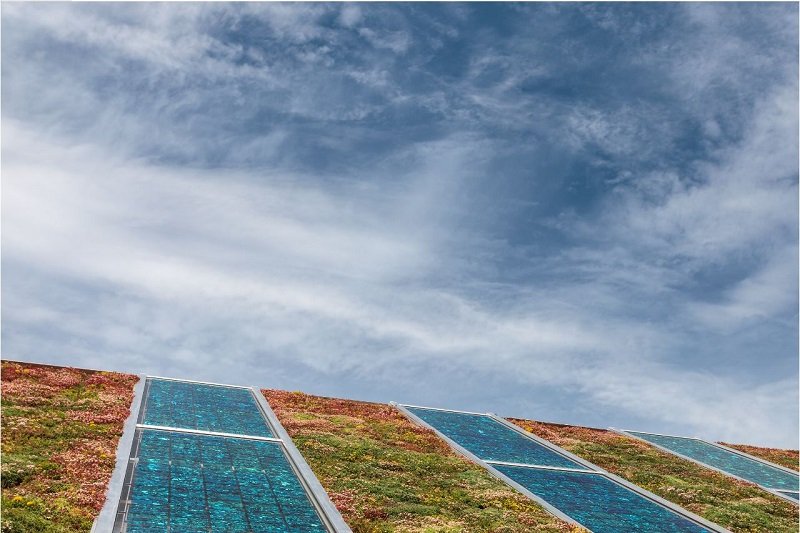Urban nature pays dividends
With a deep recession on the horizon, there is a question emerging as to how we can stimulate the economy effectively. Economist Helen Toxopeus advocates for more nature in our cities. It is a cost-efficient, sustainable investment that creates job opportunities, enhances well-being and protects biodiversity.

In 2050, it is expected that some 70% of the global population will live in cities. This means that our cities will become larger, fuller and warmer. Enabling nature to flourish, even and especially in the city, is a necessary part of keeping cities liveable and sustainable. Nature in cities serves many purposes, including in connection with aspects of climate resilience (such as cooling – and therefore public health – during blazing hot summers) and social functions, such as recreation and social cohesion in densely-populated neighbourhoods.
Urban nature is also an essential component for achieving a circular city: it increases both the lifespan of materials (bitumen roofs last longer when covered with a ‘green roof’) and energy efficiency (‘green’ cooling reduces the perceived need to install air conditioning). What is more, it helps keep our biodiversity at the proper level.
Cities will therefore become increasingly important if we are to achieve our climate and biodiversity goals – but how does one go about financing the expansion of urban nature?
Despite the myriad functions of urban nature, securing funding for green spaces in cities appears to be an obstacle
The obstacle of funding
I have spent the past two years travelling around Europe – by train, ferry and Zoom – to research methods for integrating nature into European cities at a major scale In particular, I explored the question of where to find the money to make our cities greener – because despite the myriad functions of urban nature, securing funding for green spaces in cities appears to be an obstacle.
The benefits of nature are often difficult to measure and are therefore excluded from consideration in investment decisions, which makes the business case a bit trickier than that of other sustainability-related investments (such as wind and solar power). What is more, the enjoyment of those benefits is often fragmented, meaning it is divided among different public and private parties. This results in a coordination issue. From the perspective of each individual party, the costs of integrating nature (into a building, car park, street or new neighbourhood) are high.
While leaders exist in this area, my interviews with real property investors, banks and insurance/reinsurance companies revealed that while they generally ‘saw the value’ of such investments, they were unable to make a case for it due to a lack of both proof and sufficient yield for themselves. Put simply, they were unable to sell the idea of investing in nature – for instance as part of an investment in real estate – to their colleagues and investors.
Investments in nature become cost-efficient when all parties involved only pay a portion of the costs
It often proved helpful when the parties involved were asked to pay only a portion of the costs, while still enjoying (and profiting from) all relevant benefits. When such parties cooperate by all chipping in a portion of the money, everyone helps to fund the realisation of each other’s goals and the investments in nature become ‘cost-efficient’ after all: a win-win, win-win situation. It is therefore possible for parties to arrive at a joint sustainable business case by means of successful collective action;
but how can they do so, and what is needed to succeed?

In Melbourne, the issue of urban green spaces became suddenly acute when the extreme heat of 2015 was revealed to be a threat to public health. The city settled on a goal of transforming itself into an urban forest through the corresponding Urban Forest Fund. Money from various municipal departments (parks & greenery, water, health) was pooled together, along with funds collected to compensate for the loss of biodiversity in connection with major infrastructure projects. This money was used to set up a fund to which private citizens and businesses could submit requests for rebates of up to half of the costs of a green investment, as compensation for achieving public goals on their plots. The first projects have already been realised.
In Cape Town, where extreme drought is affecting every aspect of society and the economy, The Nature Conservancy (TNC) established a ‘water fund’ through which companies can contribute to investments in water infrastructure, including green innovations. These efforts paid off: companies such as Coca-Cola – which is strongly dependent on the water supply – helped cover the costs of river management in order to combat drought. TNC is now facilitating the establishment of similar funds in other cities around the world.
Many cities offer grants for green roofs, where only a part of the costs is paid by the homeowner
What can we in the Netherlands learn from their example? Consider the green roof industry, which might prove to be a driver of sustainability during the coronavirus pandemic. Many people are spending more time around the house and are looking to improve their homes and gardens. For them, a green roof may be an option worth considering. A green roof typically costs between 35 and 80 euros per square metre to install. Say that homeowners are willing to bear around 40% of these costs themselves because they find such a roof attractive, want to benefit from its cooling effects and/or want to attract birds and bees. The remaining expense could be divided among other parties, each of whom values one aspect or another of the green roof.
Grants from the water budget
Where there is a will, there is a way: many cities and water authorities offer grants for this type of roof, with the funding allocated from the water budget. At the same time, the insurance company Interpolis has lowered the cost of green roofs by setting up collective procurement rounds, as green roofs can reduce storm damage – and therefore damage claims. There are also organisations that offer discounts for green roofs because of the biodiversity they introduce. In addition, some financial institutions such as ASN Bank and Triodos Bank include biodiversity as a criterion for weighing potential investments for their portfolio; this offers another means of promoting green roofs.
Interpolis’ collective procurement round in 2019 resulted in the installation of approximately 30,000 square metres of green roof. The action was so successful that the green roofing supplier responsible was unable to meet demand and other companies had to be contracted as well. Witness the job-creating effect of just one party’s involvement! All the parties involved have since joined forces in the National Rooftop Plan.
This is but one example intended to demonstrate that nature delivers ecological, social and economic value. To achieve long-term recovery from the current crisis and prevent the next, let us make smart investments in nature, together.
Helen Toxopeus is a researcher with the Sustainable Finance Lab and the Utrecht School of Economics, both affiliated with Utrecht University.
This blog was published on 9 June 2020 on the climate blog of the NRC (In Dutch).
Scientists from Utrecht University are reporting in the climate blog of the NRC on their research in the field of sustainability. They are united around the strategic theme of 'Pathways to Sustainability.

